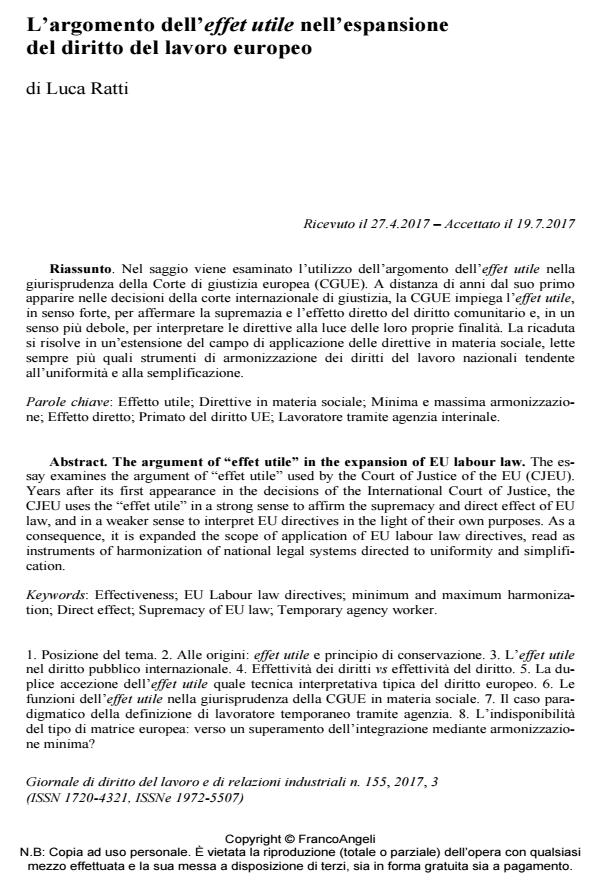The argument of "effet utile" in the expansion of EU labour law
Journal title GIORNALE DI DIRITTO DEL LAVORO E DI RELAZIONI INDUSTRIALI
Author/s Luca Ratti
Publishing Year 2017 Issue 2017/155
Language Italian Pages 25 P. 497-521 File size 881 KB
DOI 10.3280/GDL2017-155004
DOI is like a bar code for intellectual property: to have more infomation
click here
Below, you can see the article first page
If you want to buy this article in PDF format, you can do it, following the instructions to buy download credits

FrancoAngeli is member of Publishers International Linking Association, Inc (PILA), a not-for-profit association which run the CrossRef service enabling links to and from online scholarly content.
The essay examines the argument of "effet utile" used by the Court of Justice of the EU (CJEU). Years after its first appearance in the decisions of the International Court of Justice, the CJEU uses the "effet utile" in a strong sense to affirm the supremacy and direct effect of EU law, and in a weaker sense to interpret EU directives in the light of their own purposes. As a consequence, it is expanded the scope of application of EU labour law directives, read as instruments of harmonization of national legal systems directed to uniformity and simplification.
Keywords: Effectiveness; EU Labour law directives; minimum and maximum harmonization; Direct effect; Supremacy of EU law; Temporary agency worker.
Luca Ratti, L’argomento dell’effet utile nell’espansione del diritto del lavoro europeo in "GIORNALE DI DIRITTO DEL LAVORO E DI RELAZIONI INDUSTRIALI " 155/2017, pp 497-521, DOI: 10.3280/GDL2017-155004